In Style Magazine
June 1994
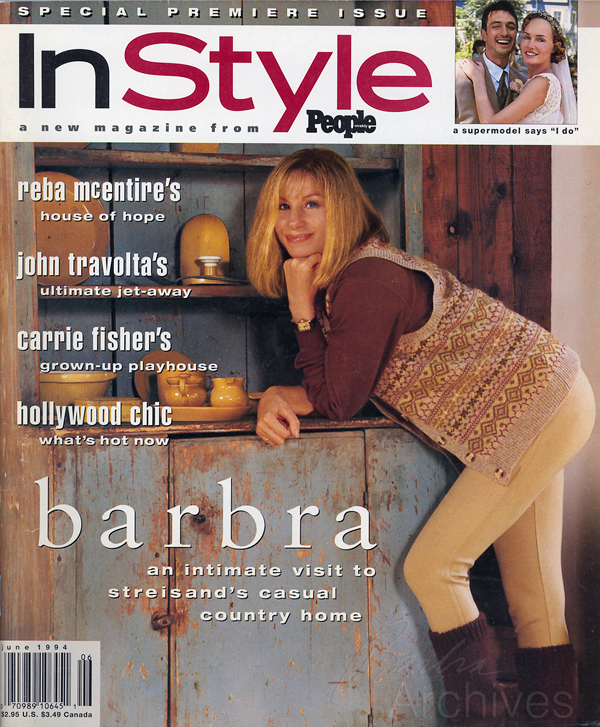
Barbra Streisand shares the album of the house she called home for 20 years
by Marilyn Bethany
Photos by John Vaughan
No one would ever mistake her for a country girl. Even if you didn't know she was born and raised in Brooklyn, or that she got her start singing in Greenwich Village nightclubs, or that she first earned star status in a very New York Broadway play, her name conjures up the image of the ultimate urbanite: savvy and sophisticated, perfectly polished.
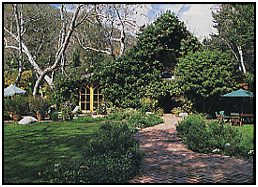
All the greater testimony, then, to the power of love that on Valentine's Day, 1974, Barbra Streisand and the new man in her life, Jon Peters, bought a rustic eight-acre property in Ramirez Canyon, a gorge in the Santa Monica Mountains which rise out of the Pacific at Malibu. "It was the first house we bought together," says Streisand, who in May began the American leg of her first tour in 28 years. "It had aluminum sliding doors and it was white stucco. In other words, it was really crummy." It was also modest in scale—just three small bedrooms, two baths and one large, open living space. Not a palace befitting a movie queen, but, with some work, a perfect place in which to raise two small boys: Streisand's son, Jason, who was then 7 (his father is Elliott Gould), and Peters' son, Christopher, 5, whom Streisand still refers to as her stepson.
(Photo, left) Vines planted 20 years ago now envelop the house with yellow blossoms.
Although the couple immediately launched a renovation campaign, their aim was not so much to enlarge the structure as to lift its spirits. Outdoors, Streisand set to work transforming the landscape. She created floral borders along the winding brick path that led to the front entrance, with its screen, the type that closes with a lovely bang. In back, she planted flower gardens—some for cutting and others ornamental—with a gazebo centered amid the maze of stone-bordered raised beds.
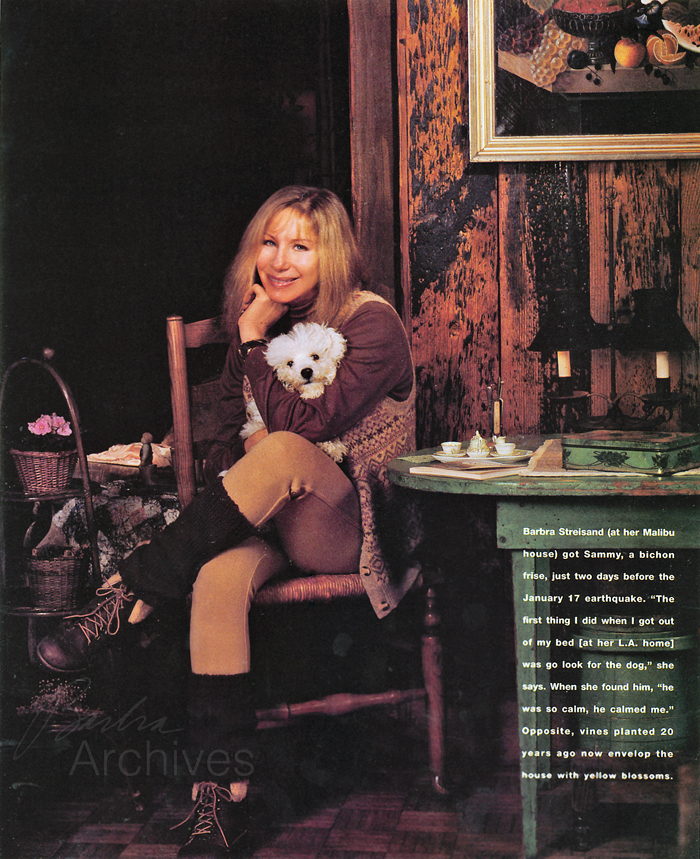
(Photo, above): Barbra Streisand (at her Malibu house) got Sammy, a bichon frise, just two days before the January 17 earthquake. "The first thing I did when I got out of my bed [at her L.A. home] was go look for the dog," she says. When she found him, "he was so calm, he calmed me."
For the house itself, she recalls, "Jon found these toy makers, I think they were from Mill Valley [near San Francisco]. They came and lived on the property and covered the entire inside of the house with wood" (hence, the name, the Barn). Some of the wood was old; other planks were scorched and oiled to give the appearance of age. The carpenters also added clear and stained leaded-glass panels to a number of windows and used still more "aged" wood to build in beds, cupboards and cabinets. The toy makers' influence shows: The place has a decided Gepetto's workshop appeal. "The kids' rooms were all built in, which was so great," says Streisand. "Both boys had ladders to climb, one to a loft, one to a bunk bed. Each room was different. My son's was in red velvet with the wood. And Christopher's was done in an Aztec print in red and brown and beige. The kids' bathroom had the same print on the ceiling."
Streisand is passionate about decorating and, by her own account, brings a sprinter's sense of urgency to her projects. "I can't wait for decorators," she shrugs. "I just get visions in my head." After she and Peters added a loft to the main room, for example, she says, "I thought it would be pretty with everything white. I love doing that, you know, the lace with the wood, balancing something very fancy and something very crude. There was an ugly couch that Jon bought, and I threw pieces of white embroidered cotton over it. In other words, I furnished the loft in a week."
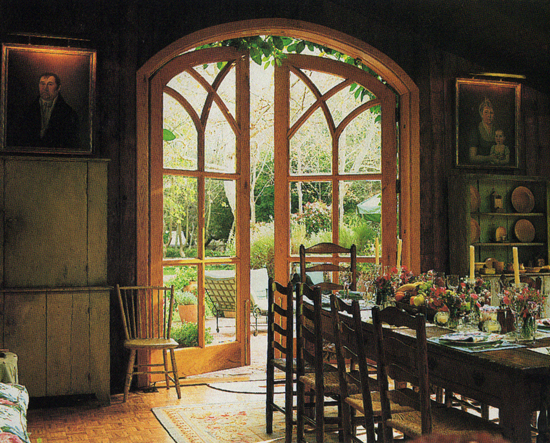
While she was away filming Yentl in 1982, Jon Peters installed doors in the dining area (right). "I hate those doors," she says. "They should have been rectangular—not Gothic."
"In other words" is one of Streisand's favorite phrases. Apparently, "I'll take it" is another. "I remember going to Venice [California] a lot and buying furniture—an old dining table and chairs, an old cupboard," she says. "Everything looked good in the Barn. This was the '70s, you know—very funky." In the living room, instead of a sofa, the couple laid a mattress on the floor within an enclosure formed by an L-shaped cabinet. "It was thrown with all kinds of pillows, antique embroideries, 1940s fabrics, and furs—before they became politically incorrect," she remembers. "On the cover of the Lazy Afternoon album, there's a picture of me on that mattress."
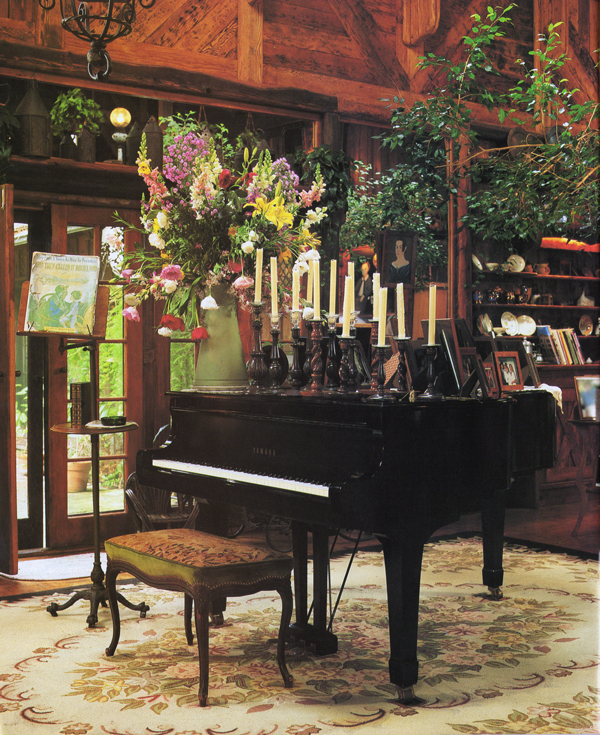 After renovating the Barn, the couple began major constructiun on the stable. It became a multilevel villa housing guest quarters, a gym and a projection room, and was named the Peach House, for the color of its stucco exterior. As properties adjacent to the original eight acres became available over the years, Streisand snapped them up and continued enlarging her family's domain. Ultimately, the compound, which she dubbed the Ranch, included three more houses, each landscaped and decorated in a different style, including an Art Deco house with a pool, a post-and-beam neo-Craftsman-styte house, and a caretaker's cottage. The 24 acres of lush gardens boasted a year-round creek (the ultimate California luxury) and a tennis court, and was interspersed with bridle paths, paved roads and foot bridges. At one point, as many as 30 stonemasons were working on the property, lining streambeds and building paths and stairways.
After renovating the Barn, the couple began major constructiun on the stable. It became a multilevel villa housing guest quarters, a gym and a projection room, and was named the Peach House, for the color of its stucco exterior. As properties adjacent to the original eight acres became available over the years, Streisand snapped them up and continued enlarging her family's domain. Ultimately, the compound, which she dubbed the Ranch, included three more houses, each landscaped and decorated in a different style, including an Art Deco house with a pool, a post-and-beam neo-Craftsman-styte house, and a caretaker's cottage. The 24 acres of lush gardens boasted a year-round creek (the ultimate California luxury) and a tennis court, and was interspersed with bridle paths, paved roads and foot bridges. At one point, as many as 30 stonemasons were working on the property, lining streambeds and building paths and stairways.
"This house looked so lovely at night when it was just lit by candlelight," says Streisand, who wrote "By the Way" (from her Lazy Afternoon album) on the piano (right).
While Peters produced, Streisand directed, overseeing the selection of every plant, tree, fabric, color chip, stick of furniture, accessory and work of arc herseif. One of her finds was a round table with a built-in lazy Susan and eight spindle-back chairs she intended for the Barn. "I was going to turn the garage into a huge kitchen with a fireplace," she says. "But I never got around to doing it. I really regret that.' " As she indulged her passion for collecting, she gained a particular fondness for American pieces. Eventually, she found herself surrounded by them, even at her other residences. "I was collecting all this French stuff," she recalls, "and then I thought, 'Why? Look how beautiful the American things are.'" (Contrary to some reports, she began making early American acquisitions long before she met President and Mrs. Clinton.) "I started to develop a love of early American paintings around 1985, then started to collect simple painted furniture and folk art. Then in 1990, I began collecting fine 18th-century American furniture, more formal pieces for my New York apartment.”

The Barn, which contains one large living-dining space, decorated with an eclectic sense of style, is Streisand's favorite house. "I like it because you can mix periods and patterns and colors," she says. "And I like the idea of one big room with high ceilings where people hang out." Though many of her valuable Tiffany lamps were sold at auction in March, Streisand continues to collect other decorative lamps, such as these early 20th-century "putties," named for the molded, high-relief design of their shades.
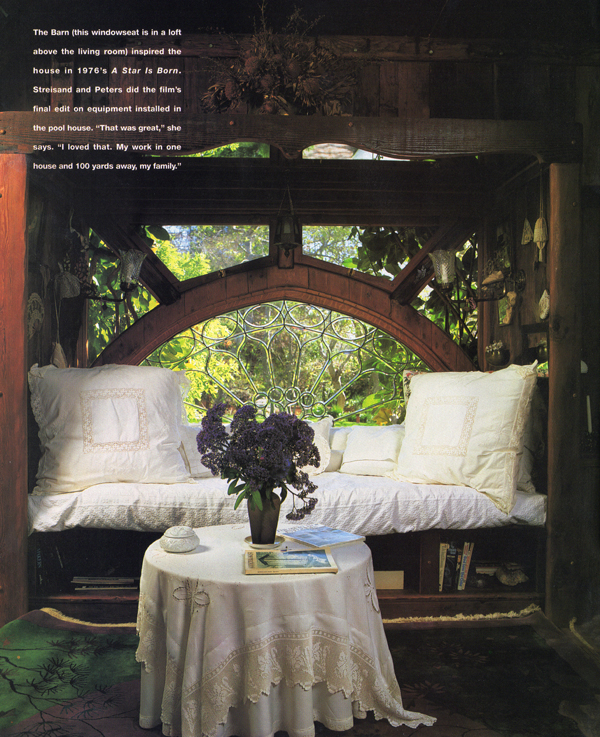
The Barn (this windowseat is in a loft above the living room) inspired the house in 1976's A Star Is Born. Streisand and Peters did the film's final edit on equipment installed in the pool house. "That was great," she says. "I loved that. My work in one house and 100 yards away, my family."
“I spent two days at the Winterthur Museum in Delaware learning about the different periods of furniture. That's why it was wonderful last year to visit the White House, the Supreme Court, the Library of Congress—and Monticello, which inspired the set for the concerts I'm doing now."
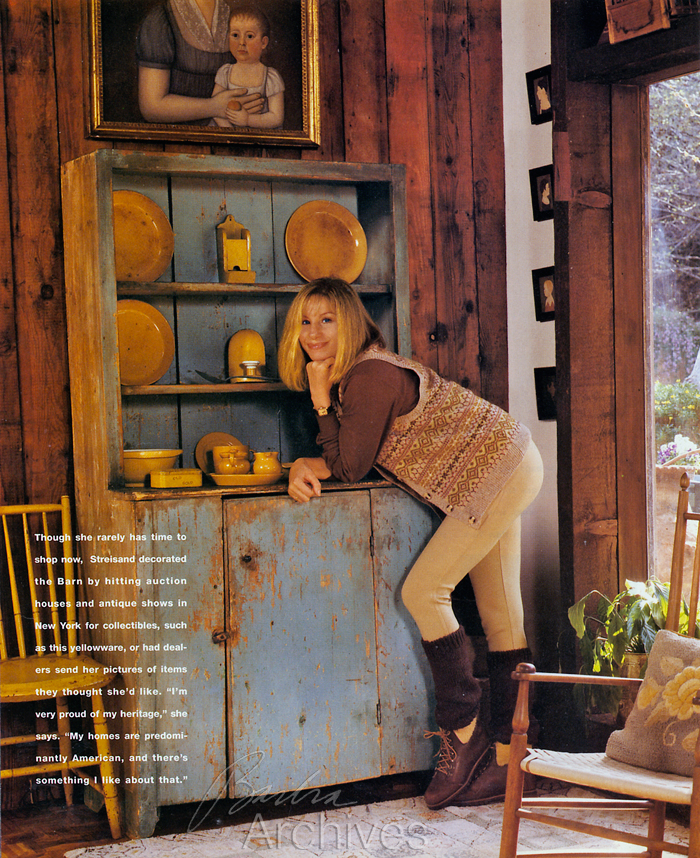
Though she rarely has time to shop now, Streisand decorated the Barn by hitting auction houses and antique shows in New York for collectibles, such as this yellowware, or had dealers send her pictures of items they thought she'd like. "I'm very proud of my heritage," she says. "My homes are predominantly American, and there's something I like about that."
In spite of the energy she devoted to her decorating projects, Streisand remembers life at the Barn as a period of contented idleness spent with her son and her gardening. Jason and Christopher became friends, taking their first baby steps in the family business by collaborating on their own monster movies, which they shot with an 8mm camera. But Streisand herself took a break. "I didn't work, actually, for quite a while after we bought the house," she recalls. The years, of course, brought changes, in the home and its inhabitants. "As you get older and become less hippie-ish," laughs Streisand, "you have to sit on a couch! You can't get up off the floor anymore." So an L-shaped ecru sectional sofa replaced the mattress, and film work (The Main Event, Nuts and Yentl) replaced those lazy afternoons. 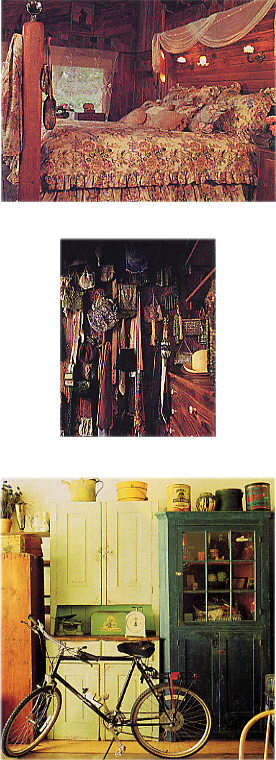
By the early '90s, Streisand and Peters, though remaining close friends, had long since parted ways and the kids had moved on. (Jason, now 27, is an actor; he appeared with his mother, playing her son, in 1991's The Prince of Tides.) Streisand turned her decorating and collecting energies to her other homes, in L.A. and New York.
Last December she donated the Ranch to the Santa Monica Mountains Conservancy—a state agency mandated to acquire land and provide educational programs—to serve as an environmental research complex. "I didn't want to live anymore with five houses and 2.4 acres," she explains. "It was just too much for me. I didn't spend enough time there to justify the expense and the worry." Earlier this year in New York, an auction at Christie's of the 20th-century decorative and fine-art pieces from her other homes brought $6.2 million, but Streisand held on to the contents of the Barn. "If I buy another house, hopefully, it will fit," she says. "It would look great at the beach."
For all of Streisand's self-professed perfectionism and troves of valuable objects, it's the well-worn rag rugs, rough-hewn cupboards and rustic pottery that have worn well with her. "I couldn't live in the Deco house," she says. "It was cold. I never felt right there." But the Barn was something else, "just so homey and comfortable. You have to remember we had young children. Christmas mornings, I would make bagels and hot chocolate and the kids would get up and the tree was right there.
"The Barn," she says, "is my favorite." "You can't control life," Streisand has said. "You can control movies and interiors." And so she has. All the beds at the Barn were built in; Streisand's was installed on a platform. She topped the rough- hewn bedposts, which were hung with her vintage shoes and gloves, with Baccarat cut-crystal" newel finials. "I love balancing the two worlds, the tension of opposites." Among the antique bags and belts in Streisand's closet are thrift shop finds from her teen years, when she began singing at clubs in New York.
Her collections filled the Barn and its garage (above). "A lot of the painted furniture I got eight or 10 years ago," she says.
END.
